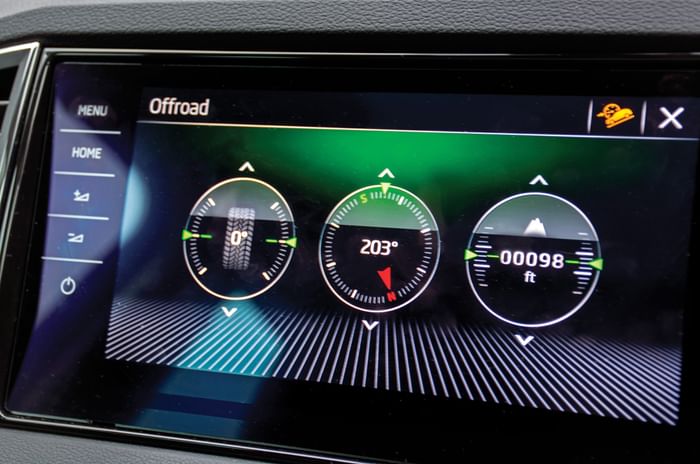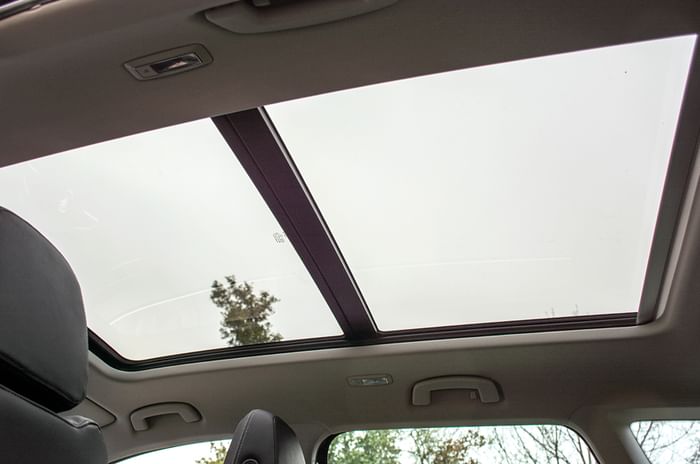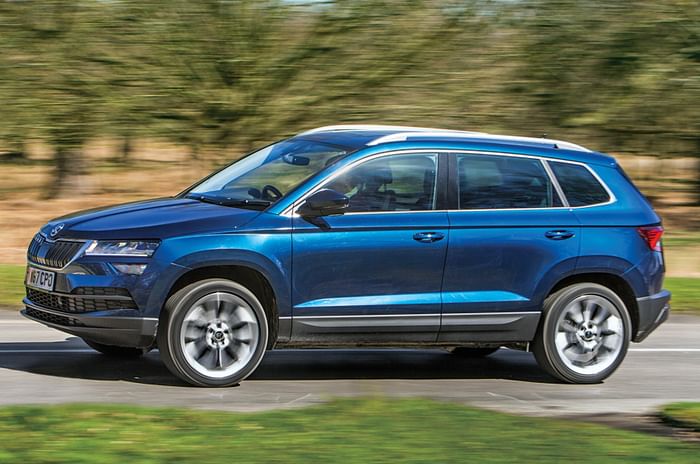Like the mythical primate it was named after, the Skoda Yeti was a rare and rather unique SUV that captivated owners with its very distinctive and unusual character. But what really earned it a fiercely loyal tribe of followers was the way it drove. Not since the Chevrolet (née Subaru) Forester have we seen an SUV that was an out and out driver’s car. No other SUV has come close to being as satisfying to drive as the Yeti, no matter how good or bad the road surface was. But no matter how brilliant and involving the Yeti was to drive, it was always as rare as...well, a Yeti. There were hardly any takers for it and in the seven years it was on sale in India, Skoda managed to sell under 5,000 Yetis. The problem was that the quirky design – which had hatchback dimensions, a small cabin, an even smaller boot and an upright van-like rear – wasn’t SUV enough for the typical SUV buyer, and not just in India but elsewhere in the world too. So when it was time to replace the Yeti, Skoda took a more conventional approach for its successor – the Karoq.
CONSERVATIVE PARTY
Though bigger in every dimension, the Karoq is far from being a grown-up Yeti, and is more of a scaled-down Kodiaq. That’s a good and bad thing; depending on which faction you belong to. Loyalists will be dismayed to see that the chunky, oddball design, which gave the Yeti its personality, is gone, and, instead, you get a more conventional shape that is more in line with Skoda’s new SUV design language pioneered by the Kodiaq. That’s a good thing for the broader swathe of buyers who will surely appreciate the well-proportioned and sharply cut lines of the Karoq.

In fact, when viewed head-on, it’s hard to distinguish the Karoq from the bigger Kodiaq. The Karoq uses the same design cues as its elder sibling, like the dual-slat grille with the indentation below the Skoda logo, the slim headlights with tiny fog lamps stacked below it and the full-width air intake in the lower bumper. It’s when you look closely that you can see the difference in the details. And design details are what the Karoq abounds with. Skoda has used the VW Group’s expertise of producing body panels with sharply drawn creases to the full. The ‘pinched’ shoulder line, chiselled wheel arches and superbly sculpted tailgate, with a unique looking tail-light design, give the Karoq lots of character. It’s nowhere near as distinctive as the Yeti but is a handsome SUV all the same, and that is sure to find almost universal appeal. And those 19-inch Crater wheels look just stunning.
Based on the VW Group’s universal MQB platform that underpins a wide range of models, the Karoq benefits from the same mechanicals used in other compact SUVs from the Group. It gets MacPherson struts up front and a four-link rear axle (for the four-wheel-drive variant), while front-wheel-drive models get a basic torsion bar setup at the rear. The Karoq also gets the competent Haldex 4x4 system from the Kodiaq and other Group SUVs, but with a longer wheelbase and greater overhangs than the Yeti; we wonder if it will be as Yeti-like off-road. However, SUV buyers don’t buy SUVs for off-road prowess and the most popular version of the Karoq is likely to be the basic front-wheel-drive version with a DSG automatic gearbox.

Practicality is what owners will certainly want and the Karoq, in true Skoda tradition, has tons of it. You get a large glovebox and lots of generous cubbyholes that can swallow one-litre bottles and other bits and bobs.
The upright seats are the highlight of the cabin. Not only do they give you an elevated view of the road but the high ‘hip-point’ and superb underthigh support makes the Karoq a hugely comfortable place to spend long hours in. Legroom isn’t as generous as the bigger Kodiaq’s, naturally, and two six-footers sitting one behind the other could experience a shortage of knee room, but, with Skoda’s VarioFlex seating system – the same we saw on the Yeti – it’s not an issue. This cleverly designed seating arrangement allows you to slide, recline and even remove each rear seat unit individually. This not only optimises passenger room but frees up luggage space too, which, by the way, is a generous 521 litres with all seats in place. Other clever bits include handy hooks in the boot area to tie down luggage, a sealed trash bin in the driver’s door pocket, rear-facing tablet holders that clip on to the front headrests, a flip-up tray for the rear passenger, and, oh yes, no Skoda is complete without an umbrella which stows neatly under the rear seat.

Top-end variants are expected to be fully loaded and should come with a massive 9.2-inch touchscreen, LED ambient lighting, a 12-speaker audio system, wireless charging for smartphones, a powered tailgate and a huge panoramic sunroof, along with a host of other equipment. The dashboard design is again very Skoda-like, with a mix of strong horizontal and vertical elements and a logical layout for all the controls. All the materials used are top notch and the cabin exudes the same sense of quality you experience in premium Skodas like the Kodiaq and Superb.
PRACTICAL THEORY
The Karoq we tested came the familiar 2.0 TDI diesel engine which develops 150hp and a healthy 340m of torque. It was also equipped with the same six-speed manual we know so well from the Yeti, but, sadly (for enthusiasts), the India-spec car will only get DSG automatic transmission. The truth is that, one of the reasons the Yeti failed in India is because it was never offered with an automatic option, and Skoda doesn’t want to make that mistake again.

Lighter than the Kodiaq by a good 313kg and paired to a manual transmission, the Karoq felt far more sprightly than its seven-seat sibling from the get go. Like most VW Group diesels, this latest TDI motor is extremely responsive, with a strong wave of torque building up from low down in the rev range. There’s a bit of turbo lag initially but it quickly disappears once the tacho needle sweeps past 1,500rpm. The mid-range is particularly punchy, which gives the Karoq great overtaking capability. Once you’re in the meat of the powerband, a slight flex of the foot whisks you forward with ease. It’s when you push north of 4,000rpm that you face some resistance. Power tails off rapidly beyond this point and the engine sounds pretty harsh. In fact, you can hear the distinct diesel drone at high revs, and in the interest of low noise levels, it’s best to keep the engine below the 3,500rpm mark.
The Karoq doesn’t have the agility of the Yeti and is more benign rather than entertaining in the way it handles. The steering is light and fairly accurate but a bit numb when it comes to feel. Engaging Sport mode only makes it heavier and doesn’t improve the steering response. The hefty diesel makes the Karoq a nose-heavy car with a tendency to understeer when pushed hard. Overall, however, it’s a passive and safe SUV to punt around and the tyres offer superb grip.

Riding on 19-inch wheels and 225/45 low-profile tyres, the Karoq’s ride feels a bit brittle over sharp edges. For India, however, we are sure the Karoq will be equipped with 17- or 18- inchers in the interest of ride comfort. On smoother surfaces, the SUV rides superbly, soaking up undulations with a flat poise so as not to disturb its occupants. There’s a satisfying solidity to the way it absorbs dips and bumps, and the suspension too works silently.
The plush and premium Karoq has an underlying tough-as-nails side to it, which makes it desirable and practical at the same time. But the key question that remains unanswered is price. Skoda has been unable to work out a competitive price for the Karoq and the projected volumes would be too low for local assembly. However, Skoda is studying the possibility of bringing the Karoq as a full import under the government's new scheme that allows carmaker's to import 2,500 units a year without requirements for homologation. The Karoq won't be cheap but will certainly be priced lower than the Kodiaq. If you don’t need the extra row of seats, the Karoq, in fact, offers almost everything the Kodiaq does at a significantly lower cost.








































